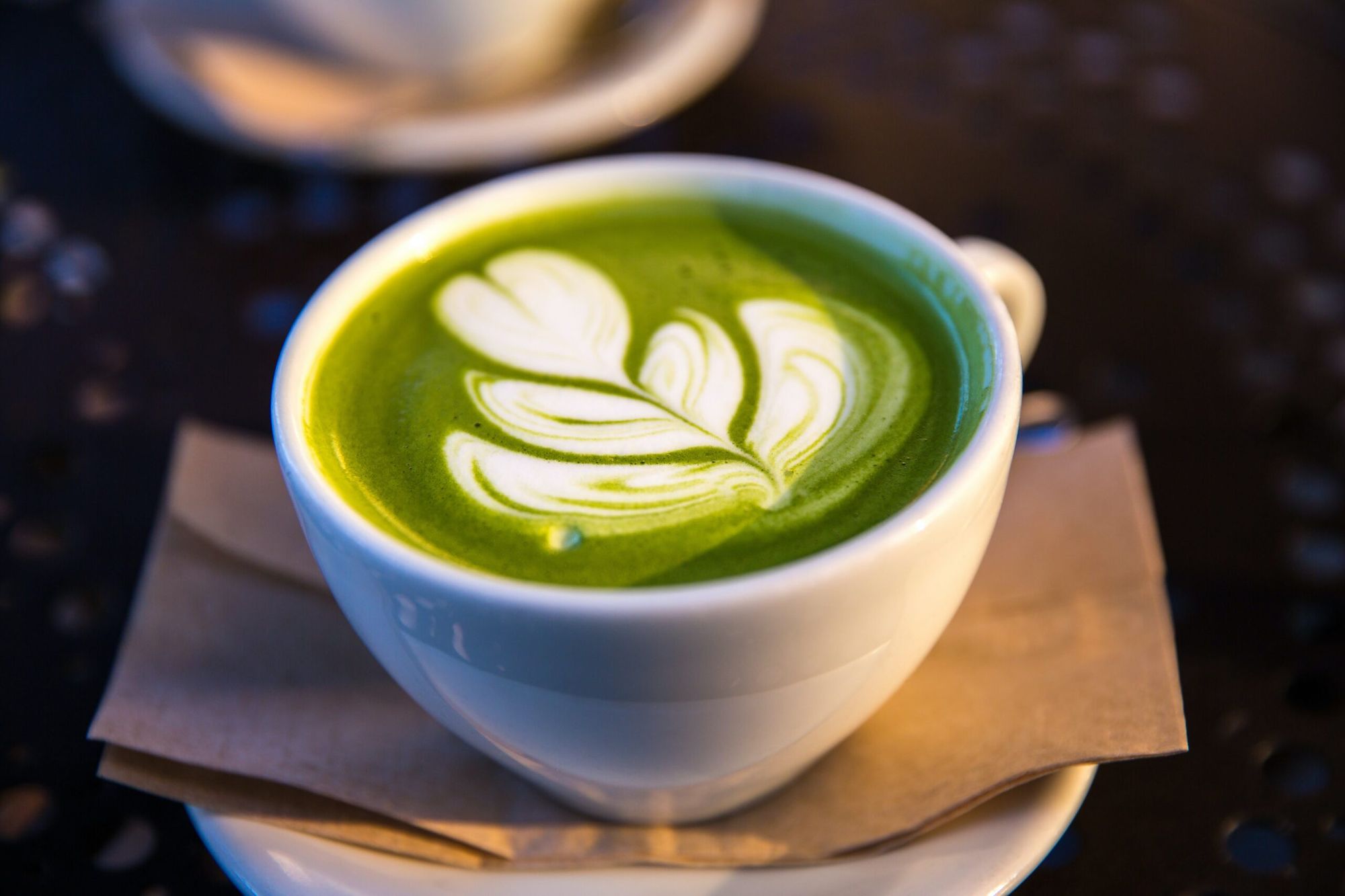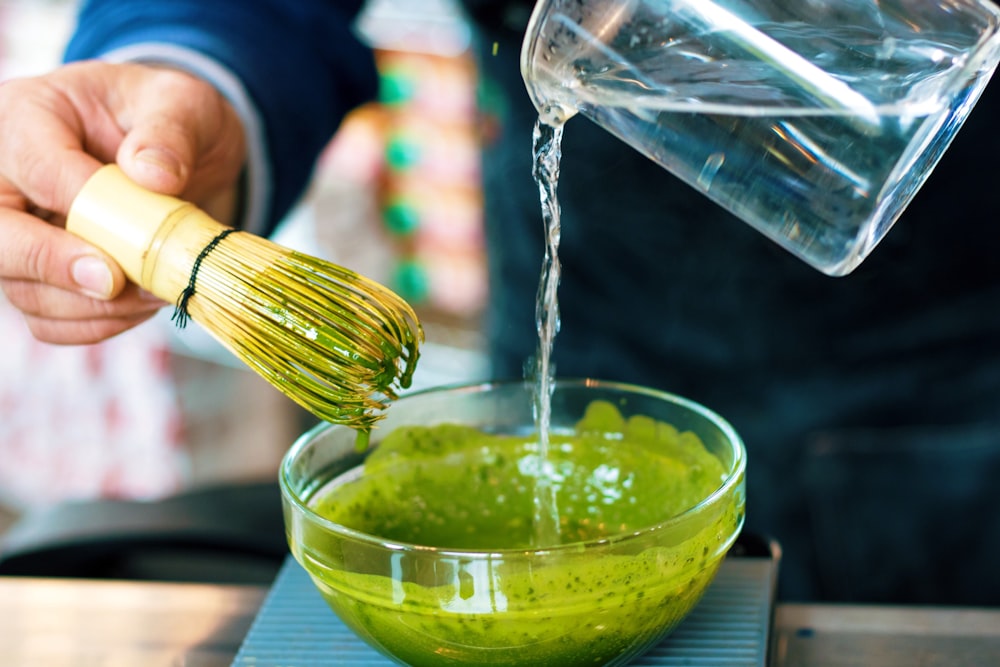
Green tea has been touted as a nutritional powerhouse for years, especially matcha green tea. The benefits of matcha being added to your diet are countless.
Recently, matcha green tea has risen steadily in popularity and has even surpassed whole-leaf green tea as the go-to beverage for the health-conscious because of the many touted benefits of matcha. Anywhere you can go to eat out, from coffee shops and cafes to restaurants and bakeries, chances are you will be able to find a drink, dessert or even a meal that features matcha green tea powder in one form or another. There are many ways to consume matcha, and it tastes delicious.
Matcha green tea leaves come from the same plant as whole leaf green tea, but the way they are grown differs slightly. The plants are kept shaded for the final 20-30 days of the growing process before they are harvested for matcha. This forced darkness increases their production of chlorophyll, one of the main antioxidants that matcha green tea is famous for and what gives the powder its signature green hue.
In fact, it’s the antioxidants that are one of the primary health benefits of matcha.
The benefits of matcha and its health properties are undeniable, but some skeptics point out that many of these claims are backed by population-based studies, not experimental research. Nevertheless, the positive results in these population studies have been of interest to health professionals. After all, if people around the globe notice health improvements after adopting matcha into their diet, that’s a fact that can’t be ignored.
So, what exactly is matcha? What makes matcha green tea powder such a nutritional powerhouse, and how can you incorporate more matcha into your diet?
What Exactly is Matcha?
Matcha is a finely ground powder made from high-grade green tea leaves. In fact, the word ‘matcha’ is literally translated to ‘powdered tea’. Green tea leaves are de-stemmed, de-veined, dried out, and then stone-ground to produce the fine, vibrant green powder. Matcha is consumed frequently throughout Asia, prominently in Japan, China, and sporadically in pockets of southeast Asia. The finest grade of matcha powder comes from Japan. There, it has been used for centuries in traditional tea ceremonies, and it remains one of the country’s most popular drinks.
Matcha has a distinct earthy, almost nutty flavour that differs slightly from green tea made from whole leaves. Green tea made from matcha powder tastes less bitter than pure green tea, and is sweeter, with a more savoury, smoother finish. When people add almond milk and a bit of sweetener to a matcha latte, that’s when the matcha in the beverage starts to taste nutty, sweet, smooth and satisfying.
Matcha powder comes in a variety of grades and textures, but can generally be whittled down to three distinct qualities: ceremonial, culinary and industrial. Industrial grade matcha powder is typically used in the making of supplements and vitamins.

Health Properties and Benefits of Matcha Powder
Green tea contains a class of antioxidants called catechins which help preserve your DNA strands and may help prevent the growth of tumours. Matcha specifically contains higher amounts of a catechin called epigallocatechin gallate (EGCG), which may help increase your body’s ability to burn fat.
Matcha powder has also been praised for its potential to lower the risk of heart disease, type 2 diabetes and may help with weight loss.Studies conducted on subjects with high cholesterol suggested that a diet that contained regular ingestion of matcha green tea might help to lower levels of LDL cholesterol. What’s more, matcha gets its gorgeous green shade thanks to the presence of chlorophyll. The scientific community is split on the effects chlorophyll can have on your skin, but it is a powerful antioxidant that can have other positive effects on your health.
Interestingly, the compounds in matcha green tea may be able to increase your levels of p53, a protein that helps to fight off cancerous cells. Given that over 50% of cancers shared p53 mutations, it’s plausible to consider that matcha green tea powder may, in fact, have real cancer-fighting qualities.
Another aspect that sets matcha powder apart from regular, whole-leaf green tea is the way it is consumed.
When you make a pot of green tea, the leaves are left to steep in hot water for a desired length of time and are then discarded, taking all their health properties with them (aside from the ones that have steeped in the water).
When you drink matcha powder, however, you are consuming the whole leaf, thereby ingesting all the goodness that green tea leaves have to offer.
How To Make Traditional Matcha Green Tea
Matcha green tea can be a healthy replacement for (or occasional alternative to) your morning coffee or can be consumed as a mid-afternoon pick me up. Its caffeine properties differ from those of caffeine in a very important way.
The caffeine from a cup of coffee causes insulin and glucose levels to rise rapidly, creating that ‘jittery’ nervous feeling associated with one cup too many. In contrast, the caffeine contained in green tea binds with another ingredient, L-theanine, which slows your body’s absorption of caffeine. L-theanine has been linked with improved mental clarity and lowered levels of anxiety and stress, which may explain why matcha drinkers have reported improved executive functioning after making the switch from coffee to matcha.
To make a cup of matcha green tea, sift about a ¼ teaspoon of matcha powder into 2 ounces of hot water. Sifting is an important step as matcha tends to clump easily. Using a chasenor whisk, mix the matcha in a side to side or a zigzag pattern until the matcha has dissolved completely and there is a nice layer of foam on top. Add another 6 ounces of hot water or steamed milk to enjoy your matcha as a latte.
There are many other ways to consume matcha, such as by adding the ingredient of matcha powder to smoothies, desserts, pancakes, and more.
However you consume it, know that you’re consuming a very healthy ingredient (especially if it’s a high-grade form of matcha powder from Japan.)
The benefits of matcha are undeniable, and it also tastes great, so adding matcha to your diet is a win-win.
Curious What Else You Should Add to Your Diet?
If you’re curious what other substances, supplements, foods or ingredients you should add to your diet, take a CircleDNA test. One of the hundreds of reports you’ll receive include diet and nutrition reports based on your DNA, which reveal which nutrients your body may need more of, and what the optimal diet for you is based on your DNA.

This Post Has One Comment
Comments are closed.